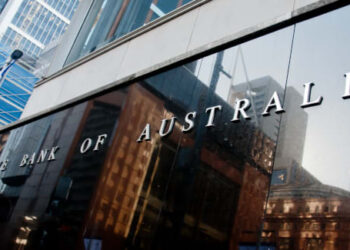Average home prices were flat in January, with a rise in regional prices offsetting a continued fall in average capital city prices, the latest data from CoreLogic has shown.
Namely, Australian capital city property prices edged lower for a fourth consecutive month in January, down 0.2 per cent. However, dwelling values in regional areas rose by 0.4 per cent, meaning that the national home price ended the month flat.
Commenting on the data, AMP’s Shane Oliver highlighted that the property market remains diverse across the country, characterised by further falls in Melbourne, Sydney and Canberra, coupled with modest but slowing gains in Brisbane, Adelaide and Perth.
“What’s more, recent month’s gains are continuing to be revised down by CoreLogic, suggesting that January’s flat outcome in national average prices could be revised down to show a fall,” Oliver said.
According to the economist, momentum – or fear of missing out – continues to support growth in Adelaide, Brisbane and Perth, in addition to strong interstate migration in the case of the latter two cities.
“However, they have slowed too as poor affordability impacts – particularly as they are all now more expensive than Melbourne.”
This, too, is being reflected in the lagged impacts on mortgage rates weighing on buyer demand and boosting distressed listings, Oliver added.
But after a shallow downswing in average prices, he believes that impending rate cuts from the Reserve Bank of Australia (RBA) could turn the tide in 2025.
“The slowdown may have a bit further to go but is likely to be shallow as lower interest rates – with the RBA expected to start cutting this month – and the ongoing shortage of property are expected to provide support for property prices driving an upswing in prices this year, provided unemployment doesn’t rise too far,” Oliver said.
“The upswing is likely to be more clearly apparent through the second half of the year.”
Namely, the accumulated housing shortfall is estimated to exceed 200,000 dwellings and is likely to remain significant as building approvals indicate that housing completions are likely to run below government objectives for 240,000 homes a year.
As such, after 4.9 per cent growth last year, AMP expects the average property price to rise by around 3 per cent in 2025.
And while AMP believes interest rates will begin falling this month, it expects only about four or five rate cuts in total, taking the cash rate back to a low of around 3.1 per cent to 3.35 per cent next year and mortgage rates to around 5 per cent.
“This will only partially reverse the 13 rate hikes since May 2022 and leave mortgage rates well above their record lows of around 2 per cent to 3 per cent. As such, the buying capacity of home buyers is expected to improve but remain well below the levels seen in 2021–22. This will limit the upside in property prices,” the economist said.
“And with a huge gap likely to remain between average prices and the capacity of borrowers to pay for a new home leaves a downside risk hanging over the market if something goes wrong – like a sharp rise in unemployment.”
Moreover, if rate cuts are delayed until May, property prices could experience further modest declines, postponing the expected upswing by a few months, according to Oliver.
As such, the economist said that the key areas to watch will be interest rates, unemployment and population growth.
“Further delays in rate cuts, a sharply rising trend in unemployment and a sharp slowing in net migration could result in a much sharper fall in property prices reflecting the divergence between home buyers’ capacity to pay and current home price levels.”
CBA economist Gareth Aird agreed on Monday that the 4Q24 consumer price index data, released last week, will green light the commencement of a modest RBA easing cycle in February.
However, Aird said that CBA doesn’t believe that property prices in Sydney or Melbourne will suddenly shift higher as rate cuts are given, pointing out that “advertised stock” levels in both cities are already well above the five-year average for this time of year.
“But it is a risk,” he said.
“The housing market is a momentum market. And if buyer appetite responds quickly to an interest rate cut it is possible that fear of missing out once again becomes a key theme in the market.”
CBA’s base case is that national home prices will grow by around 4 per cent over the year.
“But prices are likely to continue to edge lower in H1 25, before lifting over the second half of the year as borrowing capacity increases due to lower mortgage rates,” Aird said.







